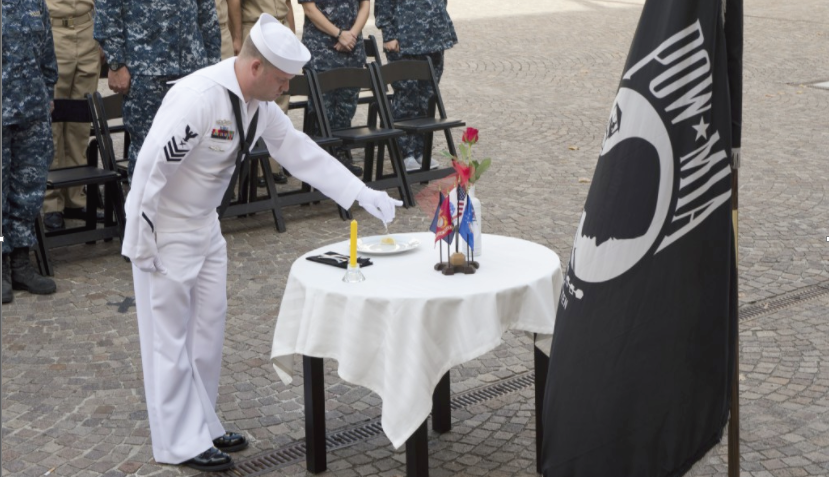By Annalisa C. Underwood For Navy Live, Oct 2014
If you’ve ever been to a military ball, stepped inside a chow hall, or attended an event at a military veterans association in your local community, you’ve likely noticed the small, round table that is always set but never occupied—the prisoners of war/missing in action (POW/MIA) table.
The tradition of setting a separate table in honor of our prisoners of war and missing comrades has been in place since the end of the Vietnam War. The manner in which this table is decorated is full of special symbols to help us remember our brothers and sisters in arms.
The POW/MIA table is smaller than the others, symbolizing the frailty of one prisoner alone against his or her oppressors. This table is separate from the others and can be set for one to four place settings to represent each service participating in the event.
The significance of the POW/MIA table is called to attention during the toast of the evening. This is an important part of many military banquets to remind us that the strength of those who fight for our country often times rests in the traditions that are upheld today.
As we celebrate the Navy’s birthday this week and you find yourself at one of the many birthday events that will take place around the world, take the time to reflect on why that small, lone table is there and raise a glass for our fallen comrades.
What to Include:
- The white tablecloth draped over the table represents the purity of their response to our country’s call to arms.
- The empty chair depicts an unknown face, representing no specific Soldier, Sailor, Airman, or Marine, but all who are not here with us.
- The table itself is round to show that our concern for them is never ending.
- The Bible represents faith in a higher power and the pledge to our country, founded as one nation under God.
- The black napkin stands for the emptiness these warriors have left in the hearts of their families and friends. A Purple Heart medal can be pinned to the napkin.
- The single red rose reminds us of their families and loved ones. The red ribbon represents the love of our country, which inspired them to answer the nation’s call.
- The yellow candle and its yellow ribbon symbolize the everlasting hope for a joyous reunion with those yet accounted for.
- The slices of lemon on the bread plate remind us of their bitter fate.
- The salt upon the bread plate represent the tears of their families.
- The wine glass, turned upside down, reminds us that our distinguished comrades cannot be with us to drink a toast or join in the festivities of the evening.




